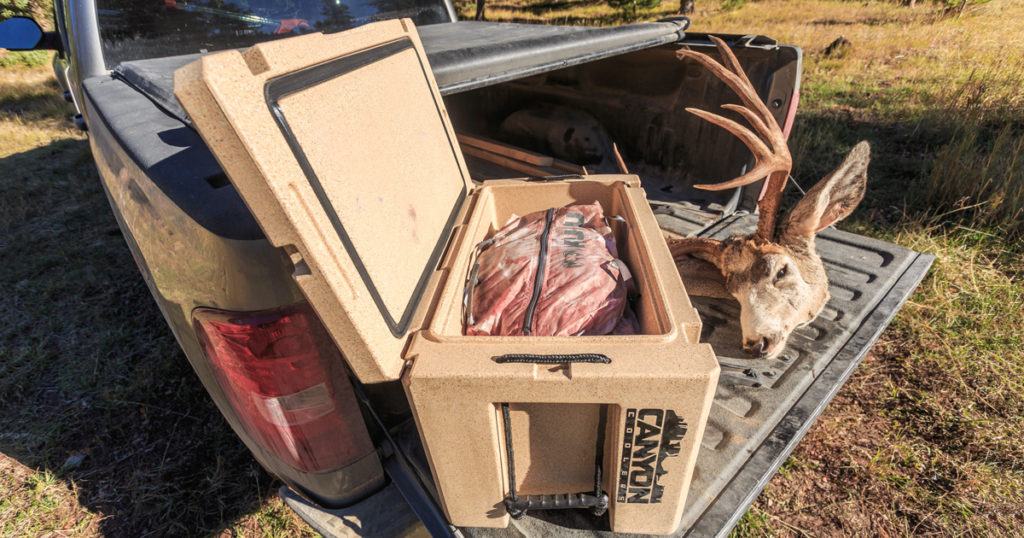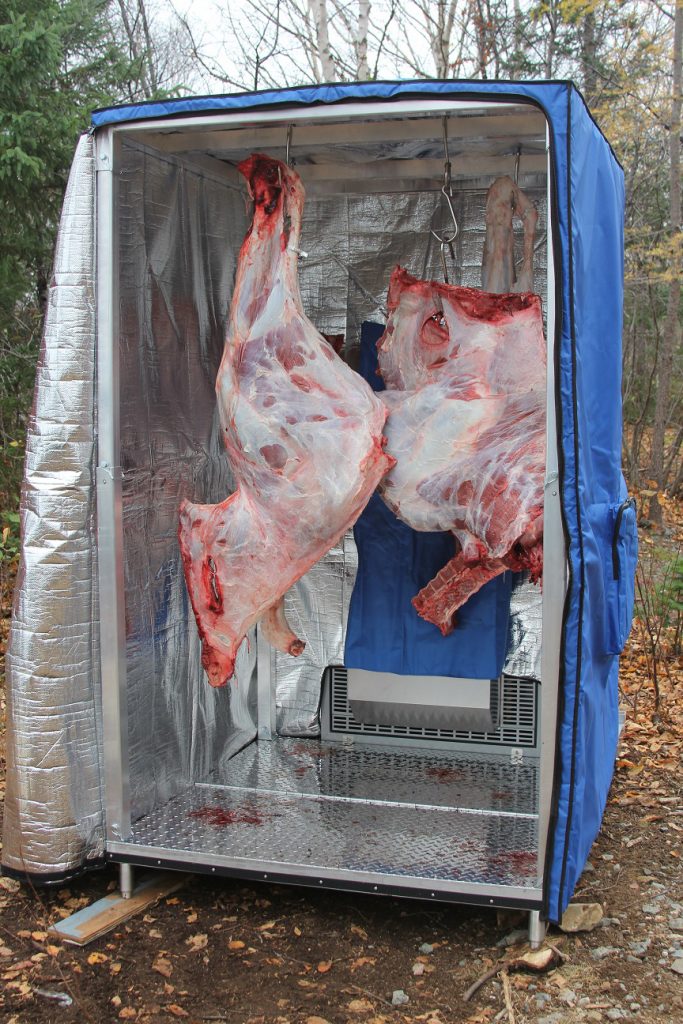12 Sep HOT MEAT!!!
Hot meat is rotten and spoiled meat. Unless you are cooking dinner, your wild game needs to stay cool. Once you have shot your wild game, the clock is running. Make sure that you have a plan, and time, before pulling the trigger.

Remember that the meat you just shot is expensive! Depending upon the hunter, try to put a price per pound on your “free” meat. Your time, gear, license, practice, weapons, travel, camp, and accessories add up fast. If the meat you harvest is less than $20 per pound, you are doing better than me.
Many hunters prefer to butcher their harvest. If I plan to share the meat with others, my name is on the package. No hair, cooties, or crud will be on the meat. After all, hunter harvest is not inspected by the USDA. Taking pride in your meat gifts is important.
Several times I have harvested a deer for a family. I processed and gave the entire deer to friends in need. I know that you can just donate a kill but… Giving a family food reminds me of Daniel Boone days. The entire village shared from a hunter’s harvest. It is also a good idea to include several recipes that they can enjoy.
Early antelope, elk, and deer seasons mean hot weather hunting. Temperatures over 80 degrees are common. Once the critter is down, your goal is to quickly get it to a cool walk in refrigerator or some other cooling area. Have a plan in place.
Sure, it is easy to just take your critter to a butcher and let them do the work. It also increases the price per pound by several dollars. Figure on another $250-300 to butcher the critter, depending on the jerky, sausage, and special cuts.
Start by opening the body cavity to release body heat. Large deer and elk mean skinning and quartering. Some hunters quarter with the skin on. This may be fine later in the cooler season. Hide on protects the meat from insects and dirt. It is best to use cotton meat sacks in hot seasons to do the same. Keeping insects off is also important. Cutting the hide, rather than skinning, also dulls the knife more quickly.
If the stomach was cut or damaged, take special care to minimize contamination. E Coli is a deadly bacterium that can cause major health issues. Digestive systems are full of bacteria so take your time. If you do have contaminated areas, wash, clean, and dry them.
The smaller sized meat will cool more quickly. Large bones will hold heat so deboning may be the best choice. Spread the meat onto a tarp or the hide. Keep the meat dirt free.
Transport and get ready for the next step. COOL THE MEAT DOWN! This means a refrigerator, or a cool area. Shaded creek bottoms are great natural cool areas. If the critter is in pieces, you may have enough extra refrigeration in the garage to do the deal.
Ice chests loaded with ice is a good choice. Lay the meat on top of the ice with the drain open. You can also make a makeshift cooler using an elevated wood frame with ice in the bottom. I once built a cooler in the creek using this trick. Water temperature is usually cooler than air temps. I used rocks and wood logs to construct a dry box in the shaded creek. The tarp had no holes in it and made a dry, but cool space. I placed 4 elk legs, and a bag of trimmed meat into the creek cooler. Another tarp on top, held down with logs, made the lid. We hunted another week before heading home. A thermometer said the box was a constant 50 degrees, especially at night. The meat was still fresh and aged.
Premium ice chests can hold ice for more than a week. Freeze ice in plastic milk jugs. They will also double as shower or drinking water. Block ice lasts longer than bag ice. You can cut small frozen water bottles up for ice in your drinks as needed.
Portable meat lockers are also a way to go. I have seen disassembled wooded boxes that you could walk in. A small air conditioner was added and run using a generator. The same idea can be made using utility trailers.

If you hang a deer, consider adding an ice jug into the body cavity. You want the meat to be off the ground and in a shady cool area. In this way you can begin processing a day or two later, depending on the temperature. If it is in the mid 30’s to low 40’s. the critter is good for a week or two. This resting time also ages the meat. Aged meat is more tender.
Hanging a critter by the neck allows the fluids to drain to the rump of the deer or critter. Try hanging the deer opposite. I prefer to hang the critter by the rump. You can hang from a stick between the knees or hook the critter at the pelvis. In this way, the deer will drain to the head, which you will not eat. Muscles tend to relax, allowing for a more tender cut.
Once your meat has been processed, wrap and label it properly. This means identifying the date and cut. You can wrap the meat in plastic wrap and then freezer paper. This double wrap works well. Vacuum sealing the meat removes all the air form the package. You need the right equipment, but this is a great way to preserve the meat. Depending on the cut and size, frozen, processed meat is good for 3-6 months. After that, the meat begins to get freezer burn and lose its flavor and quality.
Native peoples would smoke, jerk, salt, or dry their meat. These old ways will also work well.
Montana Grant
For more Montana Grant, find him chillin at www.montanagrantfishing.com.

